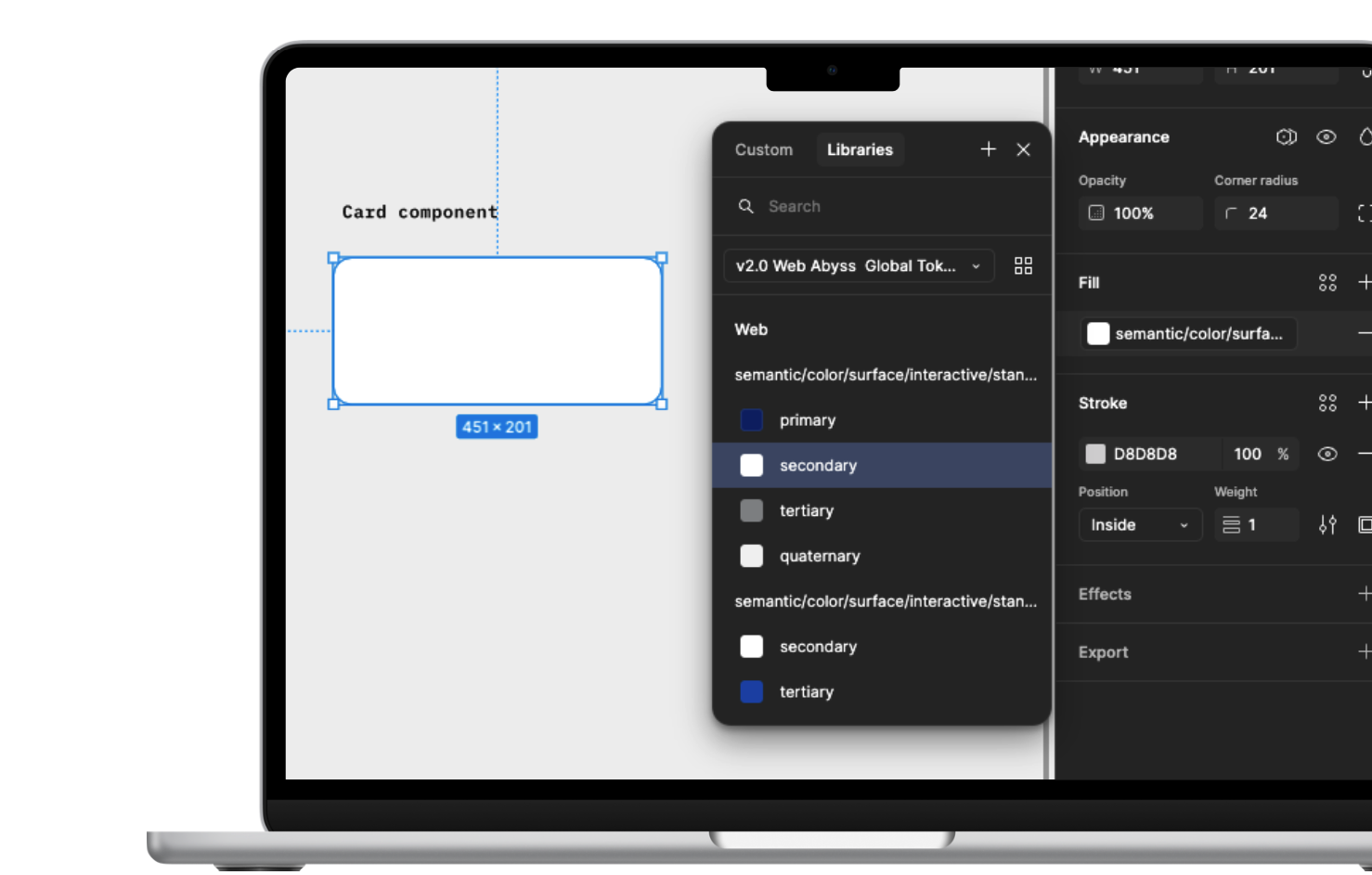

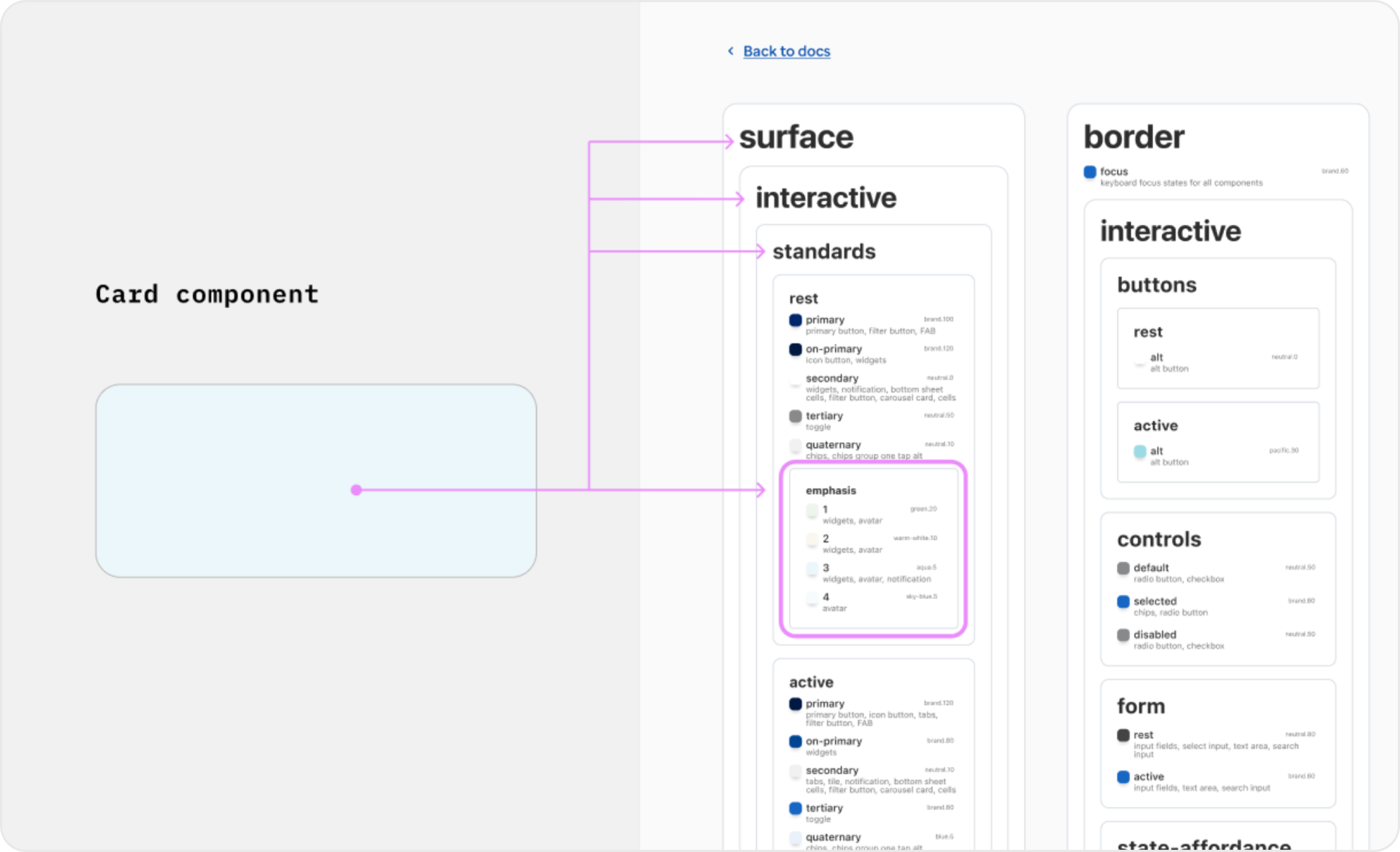
Lead Designer & UX Engineer
2024
Figma, Token Studio
Tokens are visual sub-atoms of a design system, containing UI data such as colors, border width, elevation and more.
The key benefit of design tokens? They facilitate cross-disciplinary collaboration. Tokens ensure every element of the same type is consistent across the entire design network.

After conducting an exploration and mapping, the team decided to break down tokens into three tiers:
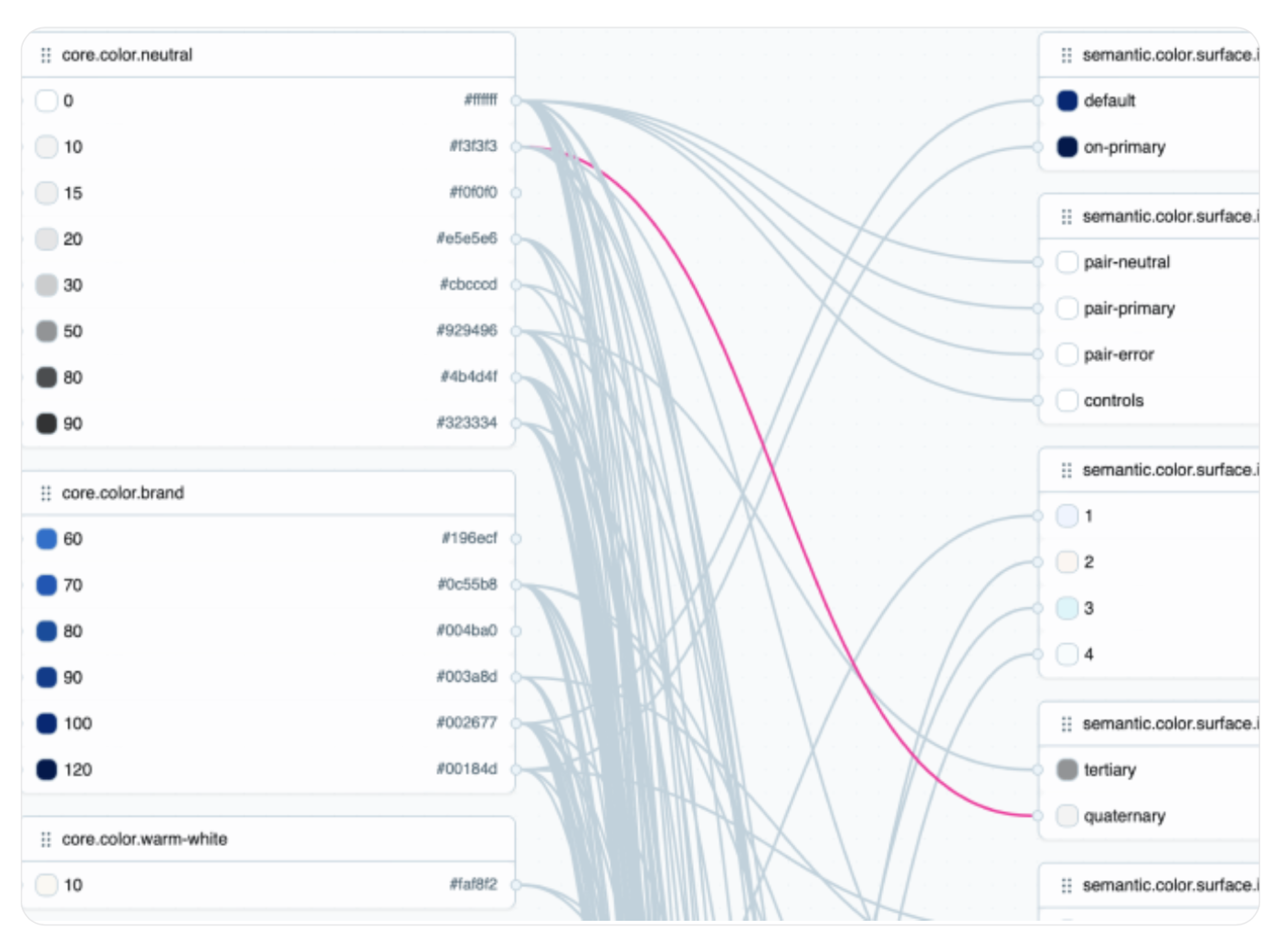
These are the base elements of the design. Within this tier are housed raw values
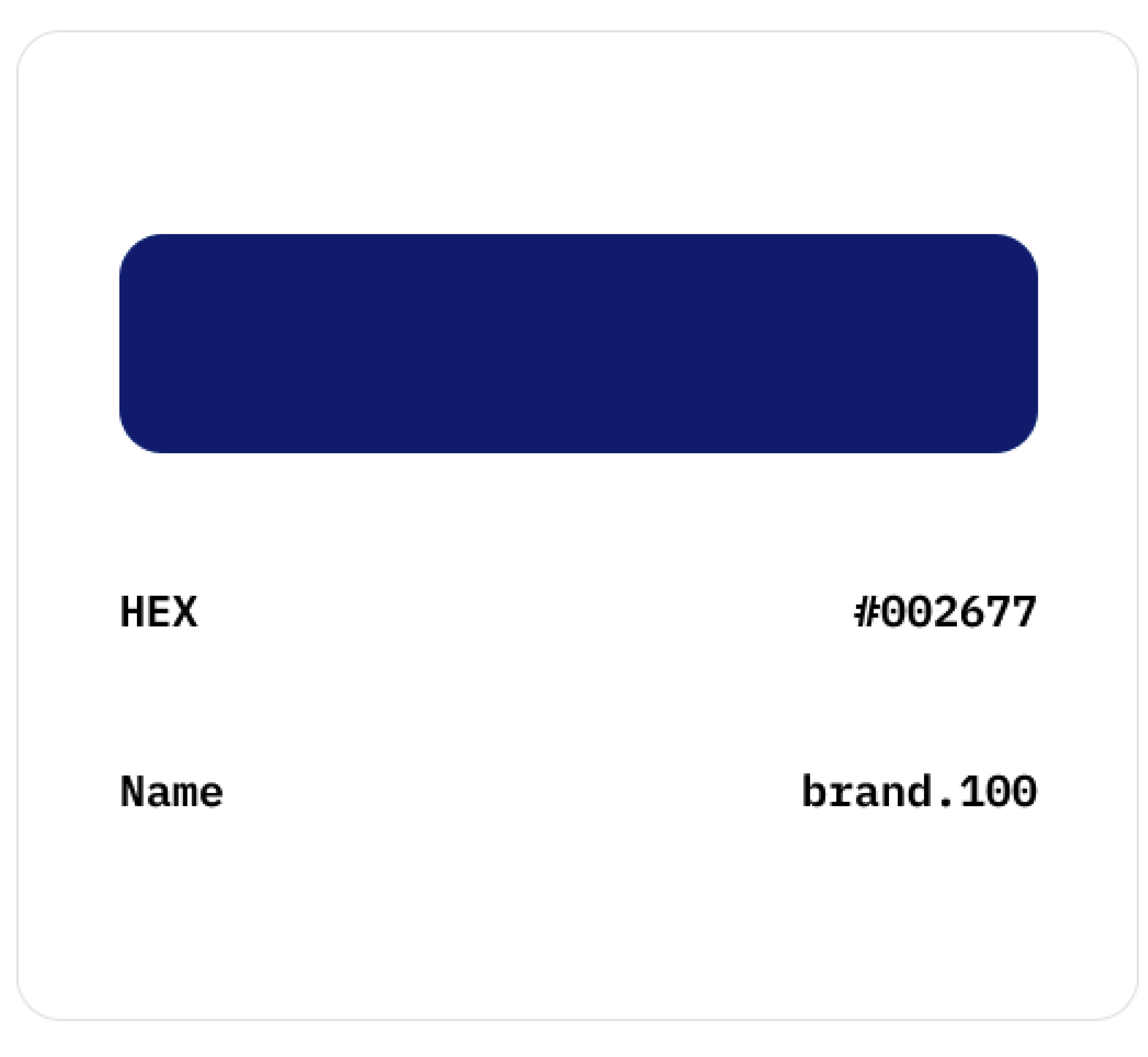
Because Core tokens don't necessarily bridge the gap between naming and use, Semantic tokens are the most valuable. They provide designers with knowledge of which option to apply in a particular context.
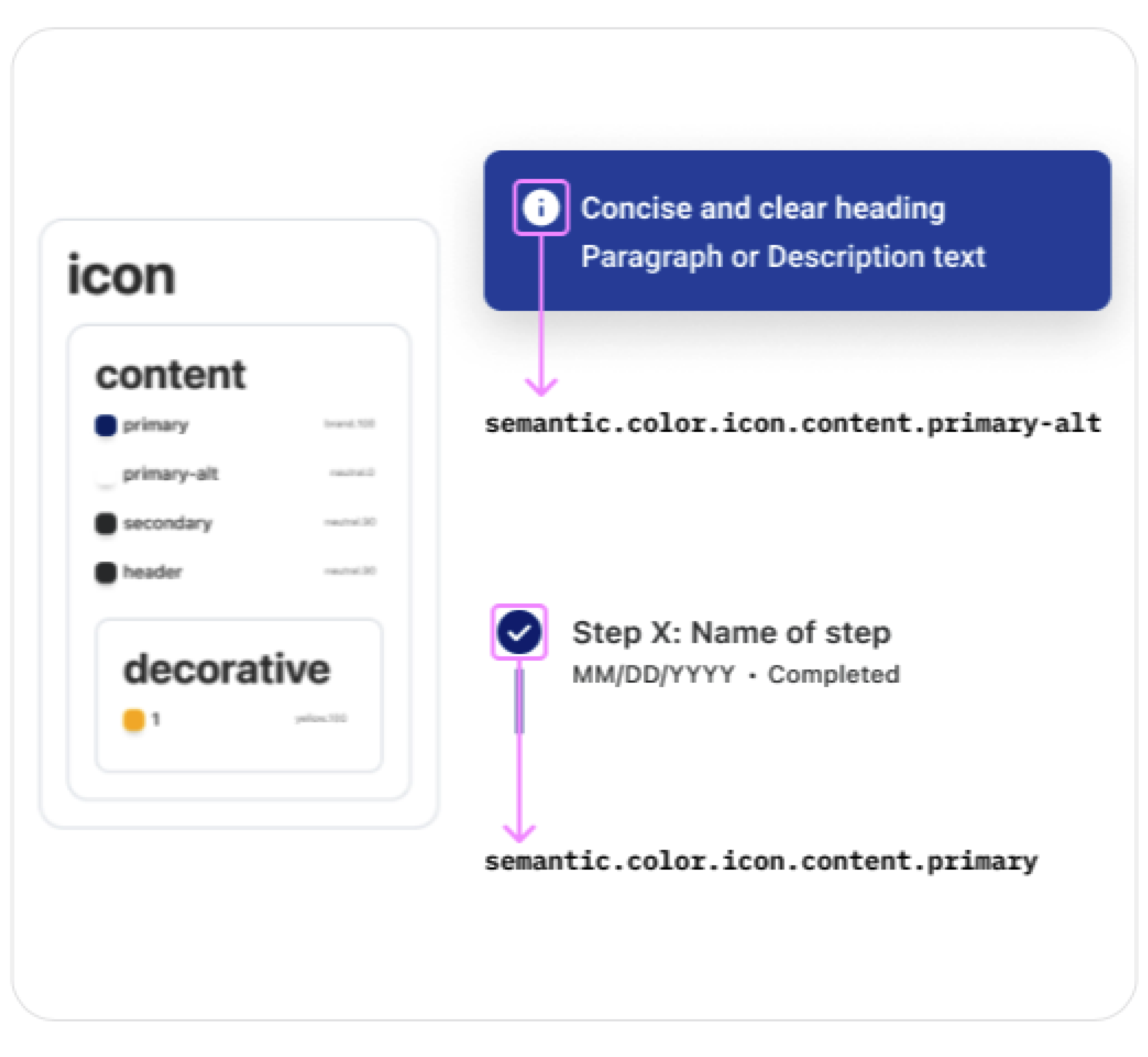
These are specific representations, often derived from an alias, used to evolve design elements.
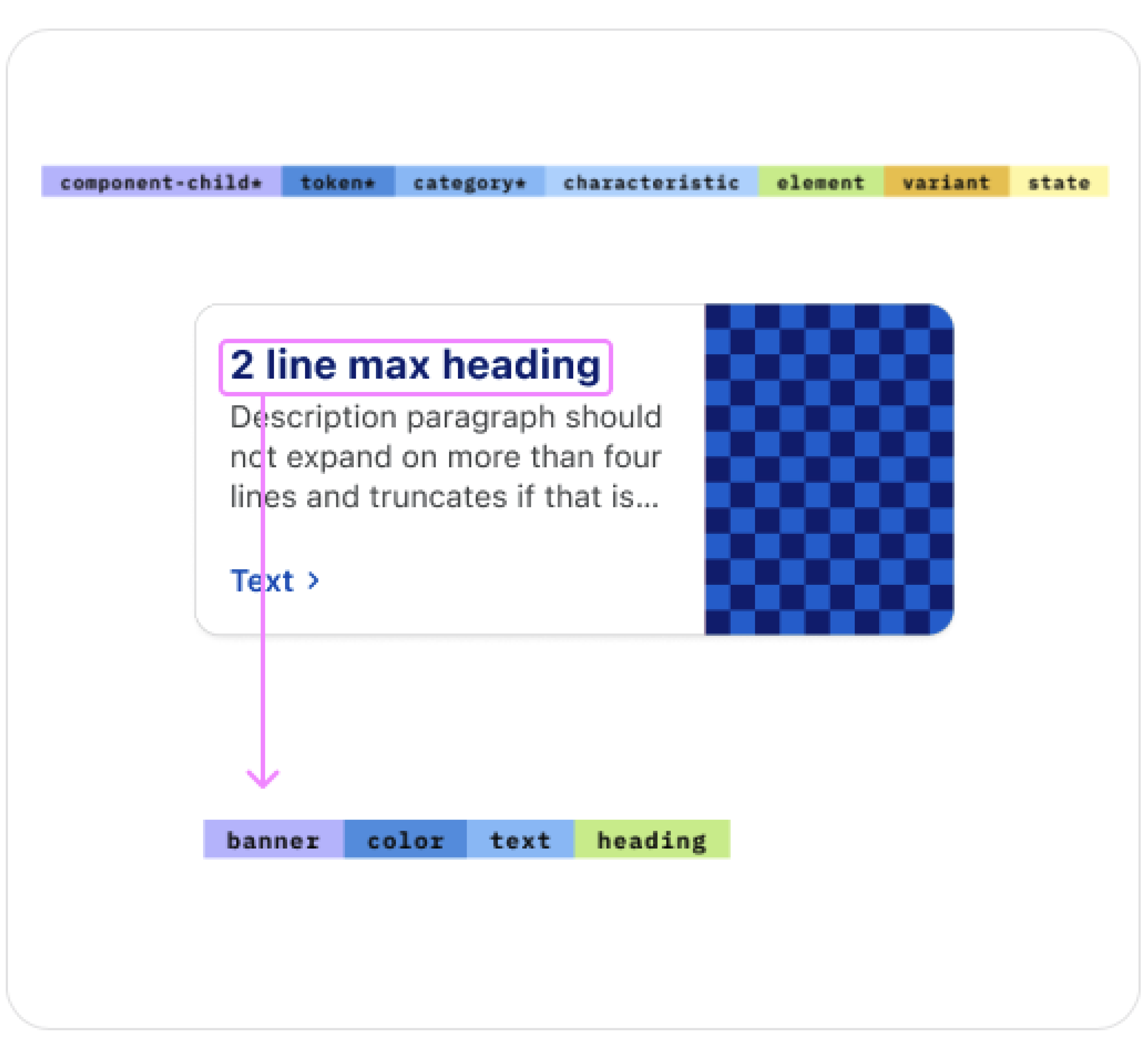
Naming tokens is one of the most crucial part of the process. Every token must have a unique name specific to it's type.
Effective token names enhance and sustain a team’s shared understanding of visual style through design, code, and other interdisciplinary handoffs.
The team approached our naming convention with a customized variation based on Nathan Curtis' token naming.
We also kept in mind the following principles:
After we created naming conventions and got team approval, I started working on token documentation in Figma.
We then synced with a design system developer who created design system packages — including compiled tokens, code snippets, and docs.
When building out components, our team utilized some steps to ensure tokens were being applied correctly. The first step is identifying a components elements and how it behaves.
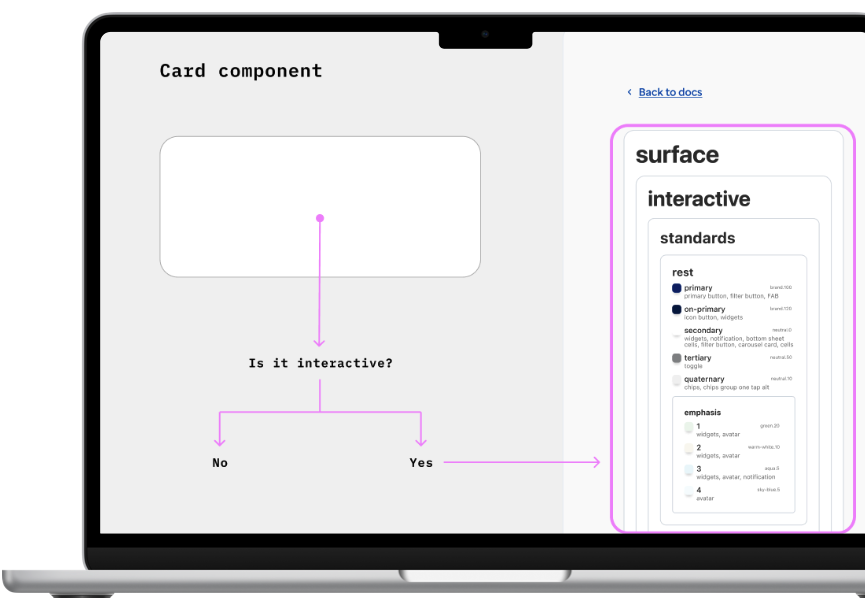
After identifying the element and it's interactivity, we look at what options are available. For that, we look at each bucket:
Interactive - This is the main bucket for all interactive elements. It houses "Standards" and "Concepts".
Standards - The go-to bucket for any new designs and components.
Concepts - The bucket representing isolated decisions accounting for a specific component.
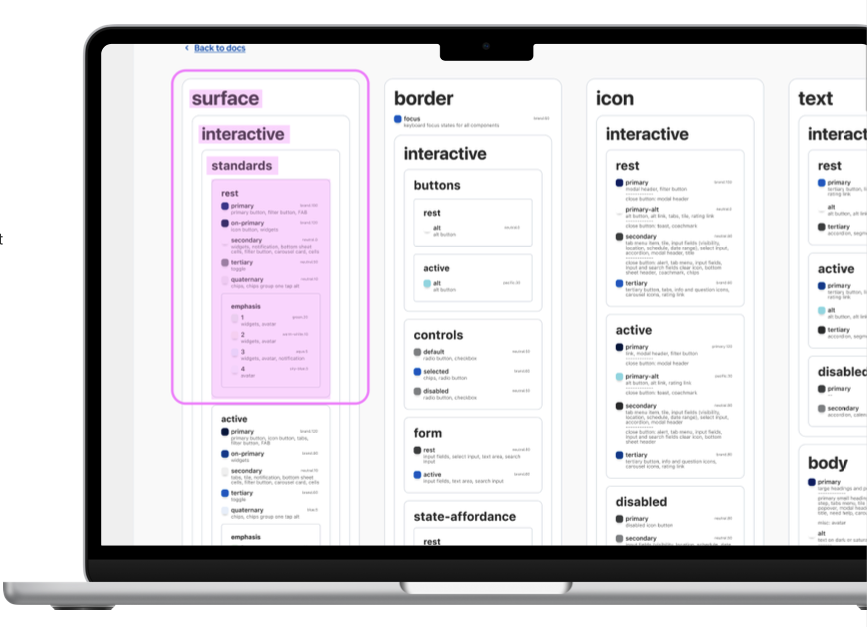
Select the option best fitting the component and it's behavior.
Depending on the complexity of the component, we understood the complexity of the token would be as well.
